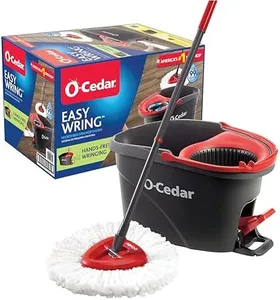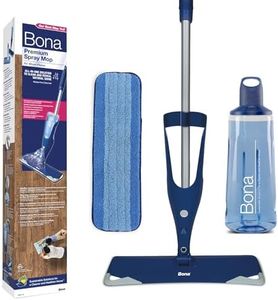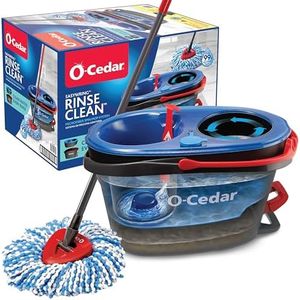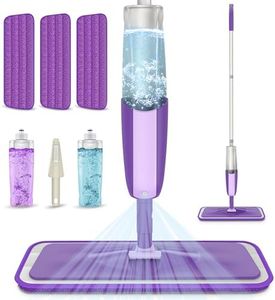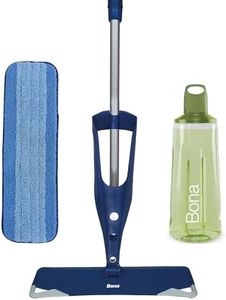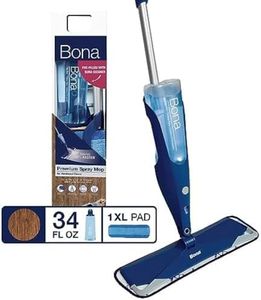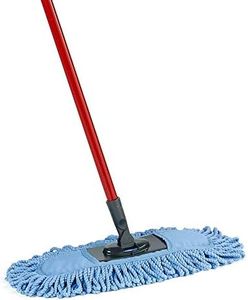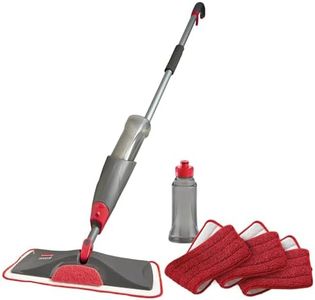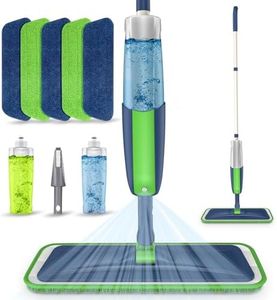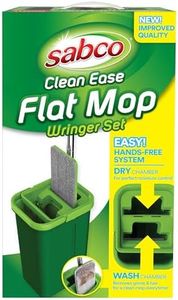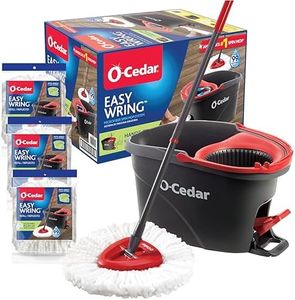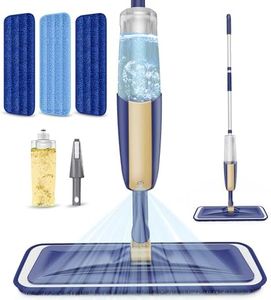We Use CookiesWe use cookies to enhance the security, performance,
functionality and for analytical and promotional activities. By continuing to browse this site you
are agreeing to our privacy policy
10 Best Microfiber Mops
From leading brands and best sellers available on the web.Buying Guide for the Best Microfiber Mops
When choosing a microfiber mop, it's important to understand your cleaning needs and the kind of surfaces you'll be cleaning. Microfiber mops are popular because they're effective at picking up dirt, easy to use, and reusable. Picking the right mop comes down to understanding a few key features so you can match the mop to your space and cleaning habits.Mop Head SizeThe mop head size refers to how wide or large the cleaning surface of the mop is. A large mop head can cover more area quickly, making it a good choice for bigger rooms or open spaces, while a smaller mop head is more suitable for tight or cluttered spaces like bathrooms or small kitchens. If you have a mix of large and small spaces, consider a medium-sized head for balanced use.
Handle Length and AdjustabilityHandle length is simply how long the mop handle is, and some handles are adjustable to fit various user heights or cleaning situations. Longer handles are great for reaching under furniture or cleaning ceilings, whereas shorter handles might be easier to control in close quarters. If more than one person will use the mop or if you want to clean different surfaces, an adjustable handle offers the most versatility and comfort.
Type of Mop Head AttachmentThis refers to how the microfiber cloth attaches to the mop base. Some use Velcro, others use pockets or snaps. Velcro makes changing pads quick and easy, while pocket or snap attachments might feel more secure during intense cleaning. If you want convenience and will be changing the heads often, Velcro is usually preferable; for a tighter fit during heavy-duty cleaning, look for snap or pocket styles.
Microfiber Pad Thickness and QualityThe thickness and type of microfiber pad affect how much dirt and water the mop can hold. Thicker and denser pads are better at soaking up spills and picking up dirt, while thinner pads are good for light dusting or maintenance cleaning. If you have lots of messes or high-traffic areas, thicker pads will serve you better. For light cleaning or dusting, thinner pads work just fine.
Washability and Pad ReusabilityThis spec describes whether the microfiber pads can be washed and reused, or if they are mostly disposable. Most microfiber mop pads are machine washable, but the number of washes they can endure varies. If you want a more eco-friendly and cost-effective option, look for pads labeled as highly durable and reusable; otherwise, you may need to replace the pads more often.
Wet vs. Dry UseSome microfiber mops are designed primarily for wet mopping, others work best for dry dusting, and many can do both. Wet mops are used with water or cleaning solutions for tougher messes, while dry mop modes are great for picking up dust, pet hair, and debris. Consider your cleaning routine: if you need a mop for both everyday dusting and deeper cleaning, choose a versatile model that handles both wet and dry use.
